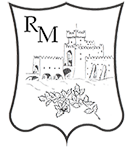White Willow
SALIX ALBA
Cellos and double bass
The most common and popular among the trees used in violin making is the norway spruce also known as “spruce”. You can find it all along the Alps especially in Val di Fiemme, Paneveggio and Tarvisio. It also known as “resonance tree” for its special qualities of sound already used by luthiers since ancient times. Today , like in the past, it is used as a soundboard for all production of stringed instruments such as strings quartet, guitars, harps, pianos and even medieval instruments. The special qualities of elasticity, lightness and strength make it an essence woody perfect for such use.
I would like to specify that the choice of this wood must be made especially for its sound than for the aesthetics of the same. In recent years spruce with very close and regular fiber was the favorite, almost to become a fixed fee in the choice of wood. In my experience however, soundboards less geometric, such as the second and third choice, recall a sound more harmonious and especially warmer.
The instruments of the most famous ancient violin makers often have beautiful harmonic plates with no-regular fibers but with a sound so clear and full that the current trend does not like according to study a few instruments of in museums. The spruce is also called “male” because inside it has the characteristics indentations. This is just a name because in reality there isn’t a variety of male spruce. The reputation of “male” has been given by loggers because the logs that roll into the valley against other logs and stones make a baritone sound very characteristic and therefore called “male”.
The sound spruce can be easily recognized because knocking at the base of the tree trunk with a mallet it makes a deep sound for about a second, that not all the trees of this species do. However, one of the notes to be highlighted is its rarity: according to a calculation of a well-known producer of soundboards in Val di Fiemme seems that only two or three trees in 1.000 are sound compared to other areas as Cadore where you can find only one tree sound in 5.000.The white willow is undoubtedly the most well-known among the types of wood in Italy, lives spontaneously across the peninsula and its growth is very fast.
It prefers water courses and wet areas, and you can also find it at high altitudes reaching sizes very important. It is also called “red willow” for the reddish brown color that receives because of oxidation in the open air during its seasoning. its wood has limited use: its branches are used for making wicker baskets due to its exceptional elasticity, but also for the production of some handle for hand tools, thanks to its lightness.
Due to these qualities instead in violin making has always been widely used by the ancients for the construction of musical instruments, mainly for interiors blocks and linings, but also for soundboxes as cellos and basses and even as the soul of fingerboards.There is also a variant of the species called a hybrid of willow cat, but for which there are no clear scientific evidence.
